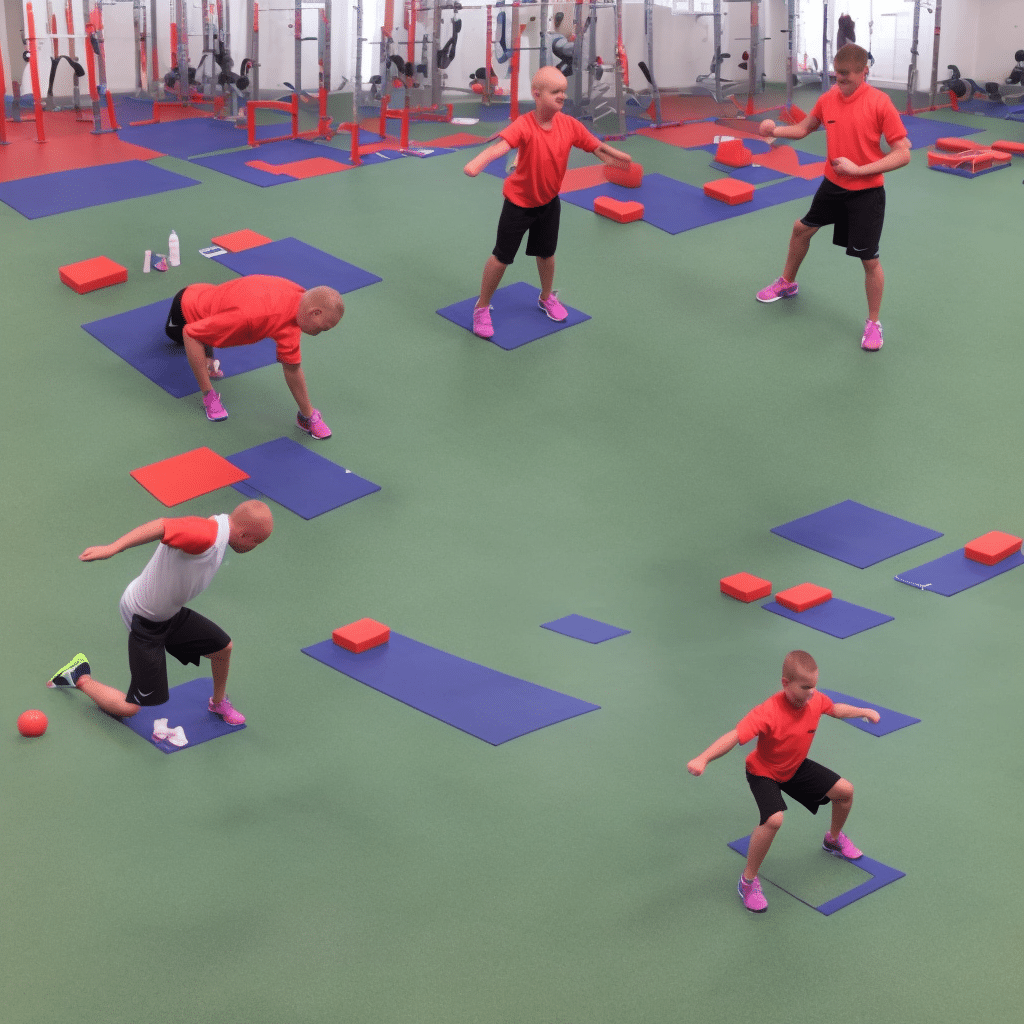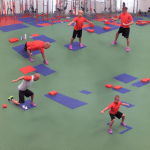As sport scholars, coaches, and enthusiasts, you’re constantly seeking ways to enhance the performance of young athletes while simultaneously reducing the risk of injuries. This quest often leads to numerous studies, searches on Google Scholar and PubMed, and discussions with fellow practitioners. One concept that has been gaining traction in the sports industry recently is Functional Movement Screen (FMS). Today, we’re going to discuss the implementation of this valuable tool in youth sports programs.
Understanding Functional Movement Screening
Before we dive into the implementation process, let’s take a moment to truly understand what Functional Movement Screening is all about. The FMS is a tool designed to identify compensatory movement patterns that are indicative of increased injury risk and inefficient movement that might cause decreased performance.
Sujet a lire : What Are the Approaches to Managing Jet Lag in Athletes Traveling for International Competitions?
The FMS was developed by physical therapists, and it is based on observable performance of seven fundamental movement patterns that are key to functional movement quality in individuals with no current pain or known musculoskeletal injury. These are deep squat, hurdle step, in-line lunge, shoulder mobility, active straight-leg raise, trunk stability push-up, and rotary stability.
Using this assessment tool, each movement is scored on a scale from 0 to 3, with the total score reflecting the individual’s movement quality. The scoring criteria are based on the ability to perform the movements without compensation and without experiencing pain.
Dans le meme genre : How Can Balance and Proprioception Training Prevent Skiing and Snowboarding Injuries?
The Importance of Functional Movement Assessments in Youth Sports Programs
Why should we bother incorporating functional movement assessments into youth sports programs? Research studies published on Google Scholar, PubMed, and Crossref have shown that individuals with an FMS score as low as 14 out of 21 demonstrate a higher propensity to sustain injuries.
These findings underscore the significance of integrating a preventive approach like FMS into youth sports programs. In addition to injury prevention, it can also contribute to the improvement of the athletes’ performance. Identifying functional deficits early allows targeted interventions that can enhance movement patterns, stability, and strength.
Strategies to Implement Functional Movement Assessments
Implementing FMS into a youth sports program involves more than merely conducting the test. It also requires the understanding and application of the results to develop an effective training program.
Firstly, coaches and trainers need to be familiar with the assessment’s scoring system. Each athlete’s individual score should guide the development of a personalized training program that addresses any identified movement deficiencies.
Secondly, regular reassessments should be carried out to monitor the athlete’s progress and to adjust the training program as needed. Keep in mind that the main goal is not to achieve a perfect FMS score, but rather to improve functional movement patterns that can contribute to better performance and lower injury risk.
Incorporating FMS Results into Training Programs
The results of the FMS can be used to inform the design of training programs. If an athlete demonstrates a particular limitation during the FMS, their training program should include exercises to improve that specific movement pattern.
For instance, if an athlete scores low in the deep squat component of the FMS, it might suggest a lack of hip mobility, core stability, or lower body strength. Therefore, their training program might need to incorporate exercises that improve these areas.
Fostering a Culture of Movement Quality
Implementing functional movement assessments requires fostering a culture of movement quality within your sports program. This involves emphasizing the importance of proper movement patterns during practice and games, and educating athletes on why movement quality matters.
By continuously reinforcing the importance of quality movement in training and competition, you can encourage athletes to take ownership of their own movement competency. This can not only lead to improved performance on the field but also contribute to their overall physical development.
In conclusion, the integration of functional movement assessments into your youth sports program can be a game-changer. It may require an initial investment of time and effort—but in the end, the benefits of improved performance and reduced injury risk are well worth it.
Customizing Training Programs with FMS
Incorporating functional movement screening (FMS) scores into the development of individualized training programs is a key strategy for optimizing player performance. Both researchers and coaches have found that cultivating a training environment that respects the unique movement patterns of each athlete can significantly enhance overall performance and reduce injury risk.
For instance, an athlete with a low score in the hurdle step component of the FMS may be demonstrating a deficiency in single leg stability. A personalized training program could then be designed to emphasize exercises that target this deficit, subsequently improving the athlete’s performance in sports that require frequent changes in direction, like basketball or soccer.
Furthermore, FMS can also help to identify potential sex differences in movement patterns. According to a systematic review on Google Scholar, Crossref Pubmed, and Phys Ther, males and females may exhibit different functional movement scores, which could be due to differences in sports participation or physical activity levels. By taking these sex differences into consideration, training programs can be even more tailored to match the needs of individual athletes.
It’s important to remember that while the ultimate goal of FMS is to improve an athlete’s functional movement, it is not about achieving a perfect score. Rather, FMS serves as a tool for emphasizing movement quality and prompting continuous improvement in a training context.
Conclusion: The Value of Functional Movement Assessments
In the rapidly evolving world of youth sports and physical education, implementing functional movement assessments offers a wealth of benefits. As underscored by numerous studies found on Google Scholar, Crossref Pubmed, and Phys Ther, the proactive approach of assessing athletes’ movement patterns can significantly reduce the risk of injuries.
Furthermore, using FMS scores to individualize training programs can lead to improved athlete performance. By focusing on the specific needs and abilities of each athlete, coaches and trainers can develop a more effective and efficient training regimen.
Building a culture that values movement quality is also a beneficial byproduct of implementing FMS. As athletes become more aware of the importance of quality movement patterns, they can take ownership of their own physical development. This not only helps improve their performance in their chosen sport but also contributes to their overall physical health and well-being.
While the initial implementation of functional movement assessments in youth sports programs might require a significant time and effort investment, the long-term benefits easily justify this. By focusing on movement quality and individualized training, FMS can play a crucial role in promoting improved athlete performance and a lower injury risk. The future of youth sports could undoubtedly benefit from incorporating this valuable tool.











